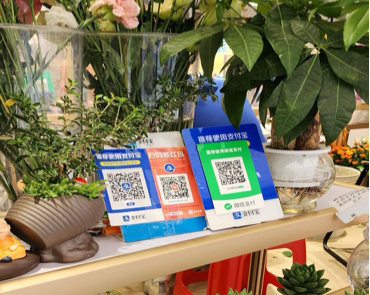BEIJING: China is transitioning towards a cashless society, with electronic payments becoming increasingly common nationwide.
According to data provided by Statista, the total transaction value in the Digital Payments market is projected to reach US$11.55tn in 2024, with the highest accumulated transaction value reached in China (US$3,744.00bn in 2024).
China’s experience offers valuable lessons for other countries, including Pakistan, as they work towards enhancing their digital payment ecosystems. This digital payment trend extends beyond urban areas, positively affecting residents and small businesses in rural regions as well.
“China offers valuable insights into Pakistan’s journey towards digital payment adoption. Pakistan can benefit from China’s diverse strategies and tailor them to meet our specific requirements,” says Monis Rahman, Co-founder & CEO, Dukan, Pakistan’s leading e-commerce infrastructure provider.
“While exploring Guangzhou, walking through charming narrow streets and alleys, I looked for small businesses to understand how they collect payments from customers. China doesn’t seem to have a unified QR scheme like UPI, RAAST, or PIX. Instead, QR codes from multiple banks are used,” Rahman said.
He observed that most shops display two QR codes—green for WeChat and blue for Alipay. Incentives likely encourage this dual display. Like Pakistan’s multiple POS machines, Chinese stores often have multiple QR codes.
Larger stores have hand-held scanners and customers exhibit dynamic QR codes in their payment apps which merchants scan. The QR code changes every time, giving more security to consumers. “However, to do this, stores must invest in relatively expensive scanner hardware and relatively complex POS software which is unlikely to be practical for our 6.5 million small retail merchants. This is a faster experience for customers since they only need to show their QR and don’t need to enter anything on their keyboards”, he noted. Rahman says he also discovered that QR sound boxes are used by about 25% of stores, but dynamic QR soundboxes are rare due to the need for complex POS software. Bluetooth-enabled payment apps offer a soundbox experience with static QR codes.
The widespread use of mobile payments in China can be challenging for first-time visitors who rely on bank cards and cash, as many vendors prefer mobile payments. To address this, the Chinese government has implemented measures to make payments easier for foreigners.
Chinese banks are expanding the acceptance of overseas bank cards and facilitating cash usage. Major payment apps like Alipay and WeChat Pay now allow foreign users to link international credit cards, simplifying the payment process. –Agencies





